The European defence landscape is currently experiencing substantial changes driven not only by the pressing threat posed by the Russia–Ukraine conflict, but also by emerging patterns, technological advances, and cooperative ventures. Merging insights from policy analysis and practitioner perspectives, this article delves into pivotal trends shaping the domain, innovative developments impacting defence capabilities, and collaborative endeavours aimed at strengthening cooperation on the European continent.
In light of ever-increasing threats and shifting geopolitical dynamics, the European Union (EU) has placed great emphasis on enhancing its defence preparedness and fostering collaboration among Member States to safeguard the lives and livelihoods of its citizens. This focus has been underscored by ongoing hostilities in Ukraine and the commemoration of 75 years since the founding of NATO, both of which have heralded a paradigm shift in defence and security considerations. In response to these emerging challenges, the EU has initiated the Defence Industrial Strategy, aiming to bolster European defence industrial readiness through concerted efforts in collaborative investment, research, and production endeavours. Furthermore, Europe has demonstrated a commitment to enhancing defence capabilities by allocating substantial financial resources, as evidenced by a projected cumulative augmentation of the initial budget for the period 2022 to 2028. The current developments in European defence have been triggered by a multitude of factors, dynamic shifts in the geopolitical environment, and requirements needed to fortify the continent’s strategic autonomy and security resilience.
Geopolitical shifts and their impact on European defence
The geopolitical dynamics within Europe have experienced a substantial reconfiguration, notably after Russia’s February 2022 invasion of Ukraine. These adjustments in geopolitics have wielded a profound influence on the trajectory of European defence strategies and alliances.
To begin with, the enlargement of NATO, through the inclusion of Finland and Sweden has extended the Alliance’s sphere of influence into the Baltic Sea region, effectively transforming it into a predominant domain for NATO operations. In the wake of recent heightened security concerns following Russia’s aggression in early 2022, both Finland and Sweden submitted applications for NATO membership in May of the same year, with the mutual aim of a tandem accession to the Alliance. While Finland’s membership was successfully completed on 4 April 2023, Sweden’s accession faced delays due to concerns raised by Türkiye and Hungary. This paradigm shift necessitates the formulation of a comprehensive security approach that encompasses Northern Europe as an integrated entity.

Credit: NATO
The NATO applications of Finland and Sweden denoted a momentous departure for these historically non-aligned nations, which, for decades, have struggled to maintain a delicate equilibrium between affiliations with the Western bloc and relations with Russia across political, economic, and cultural domains. Following the conclusion of the Cold War, both Finland and Sweden acceded to the EU and cultivated robust partnerships with NATO. Over the years, both nations have actively participated in numerous NATO operations, boasting military capabilities that align with NATO standards of interoperability. After Russia’s invasion of Ukraine, public sentiment towards NATO membership surged significantly in both countries, propelled by the perceived security benefits afforded by NATO’s collective defence principle enshrined in Article 5. Surveys conducted indicate a remarkable level of support, standing at 82% in Finland (as of November 2023) and 60% in Sweden (as of March 2024).
Certain analysts have raised concerns regarding NATO’s capacity to safeguard the extensive 830-mile Russian–Finnish border, which effectively doubles NATO’s overall border length with Russia. Finnish authorities stress that Finland has historically assumed responsibility for defending its borders and intends to continue doing so as a NATO member. Moreover, both Finland and Sweden enjoy robust traditions of societal resilience and possess considerable experience in confronting Russian disinformation campaigns, cyber assaults, and hybrid threats. While Russia has generally sought to downplay concerns regarding Finnish and Swedish accession to NATO, President Vladimir Putin has cautioned NATO against deploying troops or expanding military infrastructure in either nation.
The evolving geopolitical landscape underscores the imperative for NATO to devise a holistic security framework tailored to the exigencies of Northern Europe, addressing challenges emanating from both the Baltic Sea and Arctic regions. Consequently, the European Union finds itself compelled to reevaluate its associations and interdependencies with nations situated on both its eastern and southern peripheries. The conflict in Ukraine has also injected fresh impetus into the EU’s endeavours to fortify its strategic independence in matters pertaining to security and defence. This commitment is manifested through initiatives such as the European Defence Fund (EDF) and the European Defence Industrial Strategy (EDIS).
China’s growing influence, particularly in technology and maritime domains, has prompted European nations to consider the implications for their security and defence posture. This includes concerns about potential Chinese investments in critical infrastructure and emerging technologies.
Nevertheless, the emergence of global multipolarity holds significant ramifications for Europe and its defence milieu. As the international system transitions towards a multipolar framework, characterised by the ascent of new centres of power and the diffusion of influence, Europe is confronted with the task of navigating a multifaceted geopolitical environment. The emergence of ‘post-hegemonic multipolarity’ in regions such as Eurasia, spearheaded by countries such as China and Russia, has fundamentally altered conventional power dynamics and contested established norms. This transition towards multipolarity has instigated a critical assessment of Europe’s positioning within the global security architecture and its strategic alliances. Against the backdrop of burgeoning global multipolarity, Europe confronts the challenge of harmonising its traditional partnerships, notably NATO, with the evolving distribution of power. The EU has taken the challenge to assert its autonomy and strategic independence amidst the backdrop of a transforming global order. Still, the pursuit of a unified EU defence policy underscores the imperative to adapt to the exigencies of multipolarity and redefine its security stance.
The impact of global multipolarity on European defence transcends strategic deliberations to encompass technological advancements and industrial metamorphoses. The process of globalisation has expedited the emergence of transnational defence markets, precipitating the reconfiguration of defence industries across European nations. This trajectory underscores the interplay between security and economic variables within the context of multipolarity, thereby shaping the competitive landscape and innovation potential of European defence sectors. As a result, the current context presents both challenges and prospects for Europe and its defence framework. As Europe adapts to the shifting power dynamics and geopolitical realities, initiatives aimed at nurturing collaboration, innovation, and strategic autonomy within the EU assume paramount importance in navigating the complexities of a multipolar world. By harnessing its collective strengths and forging strategic alliances, Europe can position itself as a pivotal actor in the evolving global security architecture.

Credit: US Army/Staff Sgt Brian Darling
Nevertheless, the changing geopolitical dynamics in the Arctic region, including increased competition for resources and strategic interests, have prompted European countries to reassess their defence strategies and capabilities in the region. The Arctic region holds increasing geopolitical significance due to its abundant natural resources, emerging shipping routes, and potential for economic growth. European nations are prioritising their security interests in the Arctic amidst growing competition for access and influence in the region. Climate change-induced melting of Arctic ice has opened new opportunities for economic activity, yet it also poses security challenges. Several European countries, including Norway, Denmark, and Russia, maintain military interests in the Arctic, prompting the development of specialised military capabilities by European defence industries. As tensions rise and military activity increases, European defence industries may be called upon to support the development of military capabilities tailored to Arctic conditions, such as icebreakers, surveillance systems, and cold-weather equipment. The rise in maritime activity in the region necessitates enhanced search and rescue capabilities, prompting potential investments in new technologies by European defence sectors. Furthermore, environmental concerns such as pollution and climate change impacts underscore the need for environmental security measures, potentially involving European defence industries in monitoring, disaster response, and protection efforts in the Arctic.
These geopolitical transformations have exerted a substantial influence on the course of European defence strategies and alliances, compelling the EU and its Member States to reassess their security imperatives and allocate resources towards developing capabilities aimed at mitigating the emergent threats.
Collaborative defence initiatives in Europe
After Russia’s annexation of Crimea in 2014, European nations understood the imperative of prioritising collective defence, culminating in a commitment to substantial expenditure increments at NATO’s 2014 Wales Summit. Concurrently, the United Kingdom’s withdrawal from the EU instigated the introduction of several novel initiatives aimed at restructuring EU defence cooperation, notably inclusive of the establishment of the EDF and the inauguration of projects under the Permanent Structured Cooperation (PESCO). Assessing the ramifications of three decades of political impetus and flagship initiatives on European defence collaboration presents inherent challenges. While instances of successful defence cooperation are evident, as observed in strategic airlift and air-to-air refuelling, numerous opportunities for collaboration were overlooked, particularly within the naval domain.
In response to the evolving security landscape, European countries have embarked on a range of collaborative defence initiatives to enhance their collective capabilities and strategic autonomy:
- European Defence Fund: Inaugurated in 2017, the EDF facilitates collaborative defence endeavours among EU Member States, aiming to cultivate the advancement of innovative and interoperable defence capabilities. A notable proportion of the EDF’s budget is directed towards research and development (R&D) initiatives concerning emerging and disruptive technologies (EDTs).
- Permanent Structured Cooperation: Initiated in 2017, the PESCO framework serves as a platform for intensified defence collaboration among 26 EU Member States, minus Malta. PESCO initiatives have targeted various defence capabilities, encompassing areas such as hypersonic missile defence, unmanned systems, and military mobility.
- European Defence Industrial Strategy: In 2023, the EU introduced its inaugural EDIS, designed to enhance the competitiveness and cooperation within the European defence sector. This strategy delineates ambitious objectives concerning collective procurement, intra-EU defence commerce, and the utilisation of domestically produced defence apparatus.
- EU–NATO Cooperation: The EU and NATO have intensified their cooperation regarding defence and security affairs, acknowledging the imperative of augmented coordination and interoperability. This collaborative endeavour encompasses joint initiatives in domains such as EDTs, crisis management, and the development of capabilities.
- Hub for EU Defence Innovation (HEDI): Introduced in 2022, the HEDI) initiative represents a novel endeavour within the European Defence Agency (EDA), aimed at stimulating innovation within the European defence landscape. HEDI serves as a facilitator for fostering collaborative ventures among Member States, industry stakeholders, and research entities.
- Collaborative Procurement of Ammunition for Ukraine: In a landmark development, EU Member States have collectively undertaken the procurement of ammunition to aid the Ukrainian Armed Forces, representing a notable stride in the realm of European defence collaboration.
While geopolitical shifts have significantly impacted the direction of European defence strategies and alliances, driving the EU and its Member States to reevaluate their security priorities and invest in capabilities to address the evolving threats, the collaborative initiatives developed in the last years demonstrate the EU’s commitment to enhancing its strategic autonomy, improving the competitiveness of its defence industry, and fostering greater interoperability among its Member States.
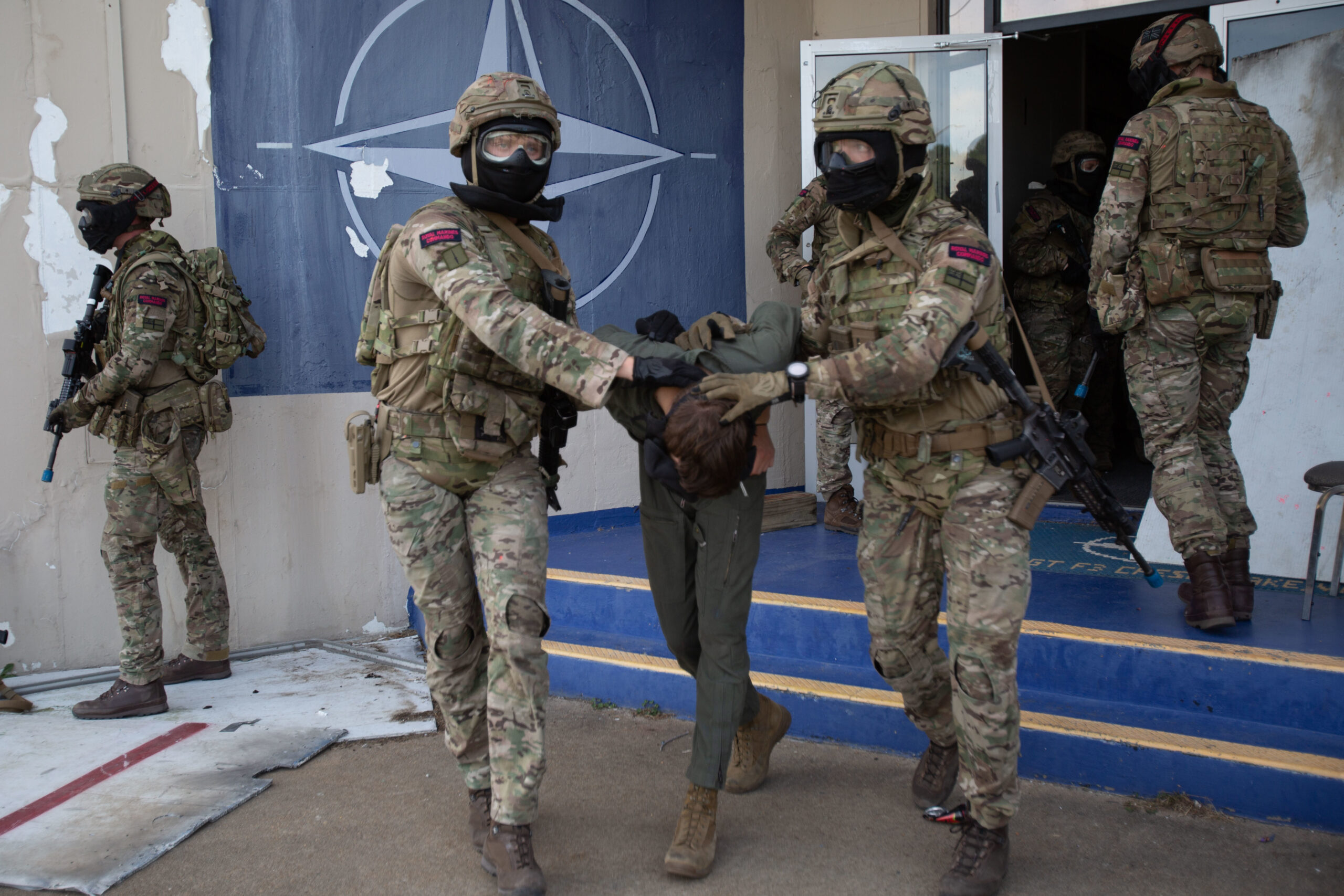
Credit: USMC/Lance Cpl Jack Chen
Still, despite a notable increase in European defence expenditures, a significant portion of the allocated funds has been channelled towards the procurement of readily accessible US military equipment, rather than towards ameliorating the fragmented state of Europe’s defence industry and armed forces. This strategy fails to rectify the fragmented structure of Europe’s defence infrastructure and highlights a squandered opportunity to cultivate collaborative efforts.
Innovations in the European defence industry
In line with current developments, the European defence industry is capitalising on innovative technologies and operational paradigms to augment its capabilities and competitiveness. The European defence sector has emerged as a vanguard in the adoption of innovative technologies aimed at augmenting military equipment capabilities. Substantial investments have been directed towards technologies encompassing advanced propulsion, bio- and nanotechnology, and novel materials, facilitating advancements in European military prowess, notably in the realms of long-range precision weaponry and enhanced effects armaments. Concurrently, cyber security has risen to a position of paramount importance, with European nations actively seeking to bolster resilience against cyber threats, counter cybercrime, and elevate cyber diplomacy and defence endeavours.
In Europe, the demand for military equipment exhibits heterogeneous patterns, characterised by a heightened interest in sophisticated weaponry, which in turn stimulates augmented investment in military R&D endeavours and sales activities. Positioned as the second-largest military production hub globally, the European defence sector is faced with a strategic quandary: whether to pursue the establishment of a unified continental industrial foundation or to emerge as a dominant player within the broader Atlantic defence industry. This conundrum underscores the dynamic transformations within defence capabilities and technological landscapes in reaction to the fluid security milieu. Moreover, the pivot towards fortifying cyber security capabilities mirrors the industry’s proactive response to contemporary threats and potential vulnerabilities, aligning with evolving security imperatives.
There are several key strategies and initiatives that are central to the current trajectory of the European defence industry. First, the EU recognises the overlap between civilian and military technological advancements and therefore pursues efforts to promote the development of dual-use technologies capable of serving both defence and non-defence purposes. This approach is geared towards expediting innovation and fostering synergies across these domains. Second, European defence entities such as the EDA and NATO are actively engaging with the start-up and non-traditional technology sectors to harness innovative solutions and disruptive capabilities. Initiatives such as the EDA’s Defence Innovation Prize and NATO’s DIANA accelerator programme serve as conduits for facilitating collaboration between these entities. Third, certain European defence enterprises are embracing a more vertically integrated approach, amalgamating differentiated software capabilities with hardware platforms to better cater to the demands of defence clientele. This product-centric model aims to furnish integrated solutions that are better aligned with the preferences of military customers.
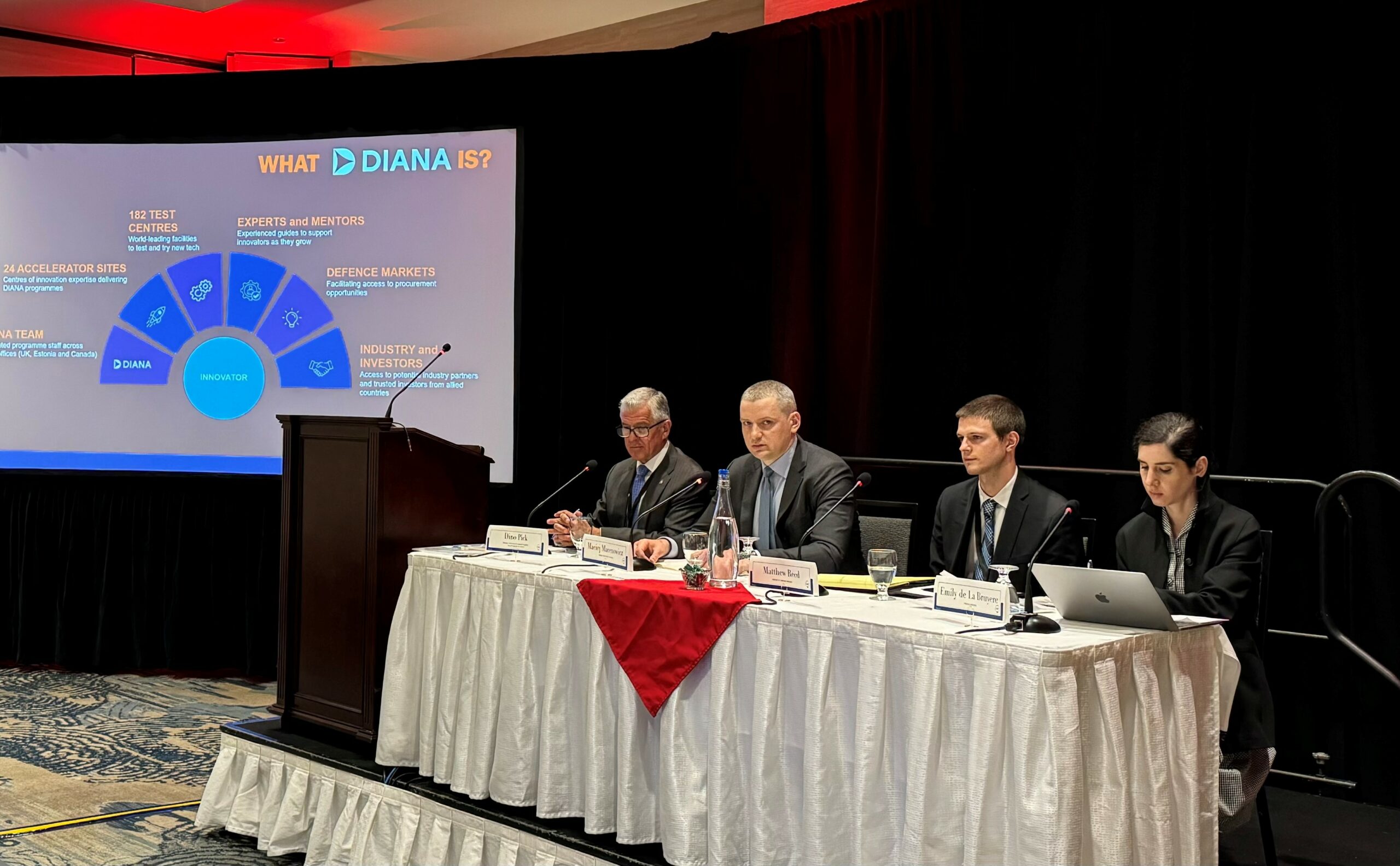
Credit: USAF/Airman 1st Class Zachary Wright
European defence companies are exploring the adoption of advanced manufacturing techniques, including additive manufacturing, automation, and digital twins, to bolster production efficiency, truncate lead times, and fortify supply chain resilience. The European defence industry is also witnessing a surge in consolidation and collaboration pursuits, both intra-industry and with non-traditional partners, aimed at attaining greater scale, enhancing competitiveness, and leveraging complementary capabilities. These innovative strategies and initiatives within the European defence industry are deemed indispensable for preserving technological supremacy, enhancing responsiveness, and safeguarding the long-term viability of the sector.
Emerging and disruptive technologies in European defence
The EU and its Member States have acknowledged the pivotal role of emerging and disruptive technologies in reshaping contemporary warfare paradigms. Spearheaded by the EDA, six primary EDT focus areas have been identified: quantum-based technologies, artificial intelligence, robotics and autonomous systems, big data analytics, hypersonic weapons systems, and space technologies.
Quantum computing, sensing, and communication hold promise for impregnable encryption, highly precise navigation, and augmented intelligence gathering. The EU has made substantial investments in quantum R&D efforts, exemplified by initiatives such as the Quantum Flagship initiative.
AI-driven systems are being seamlessly integrated into diverse defence applications, encompassing autonomous weaponry, decision support systems, predictive maintenance, and cyber security protocols. Initiatives such as the EDF have been initiated to underpin AI-centric defence innovation.
The proliferation of unmanned aerial vehicles (UAVs), unmanned ground vehicles (UGVs), and analogous autonomous platforms is revolutionising the contemporary battlefield. The EU is fostering the development of such technologies through initiatives, including PESCO and EDF.
The capacity to swiftly process and glean insights from vast, intricate datasets is indispensable for intelligence, surveillance, and reconnaissance (ISR) operations. The EU is channelling investments into big data analytics capabilities via initiatives such as the European Union Agency for the Space Programme (EUSPA).
Hypersonic cruise missiles (HCMs) and hypersonic glide vehicles (HGVs), characterised by velocities exceeding Mach 5, pose formidable challenges in terms of detection and interception. France spearheads the EU’s pursuits in this sphere, recognising the strategic significance of these technologies.
The advancement of sophisticated space-based capabilities, encompassing satellite communications, Earth observation, and space-borne early warning systems, assumes paramount importance for military operations and situational awareness. The EU’s flagship space programmes, Galileo and Copernicus, are pivotal in this domain.
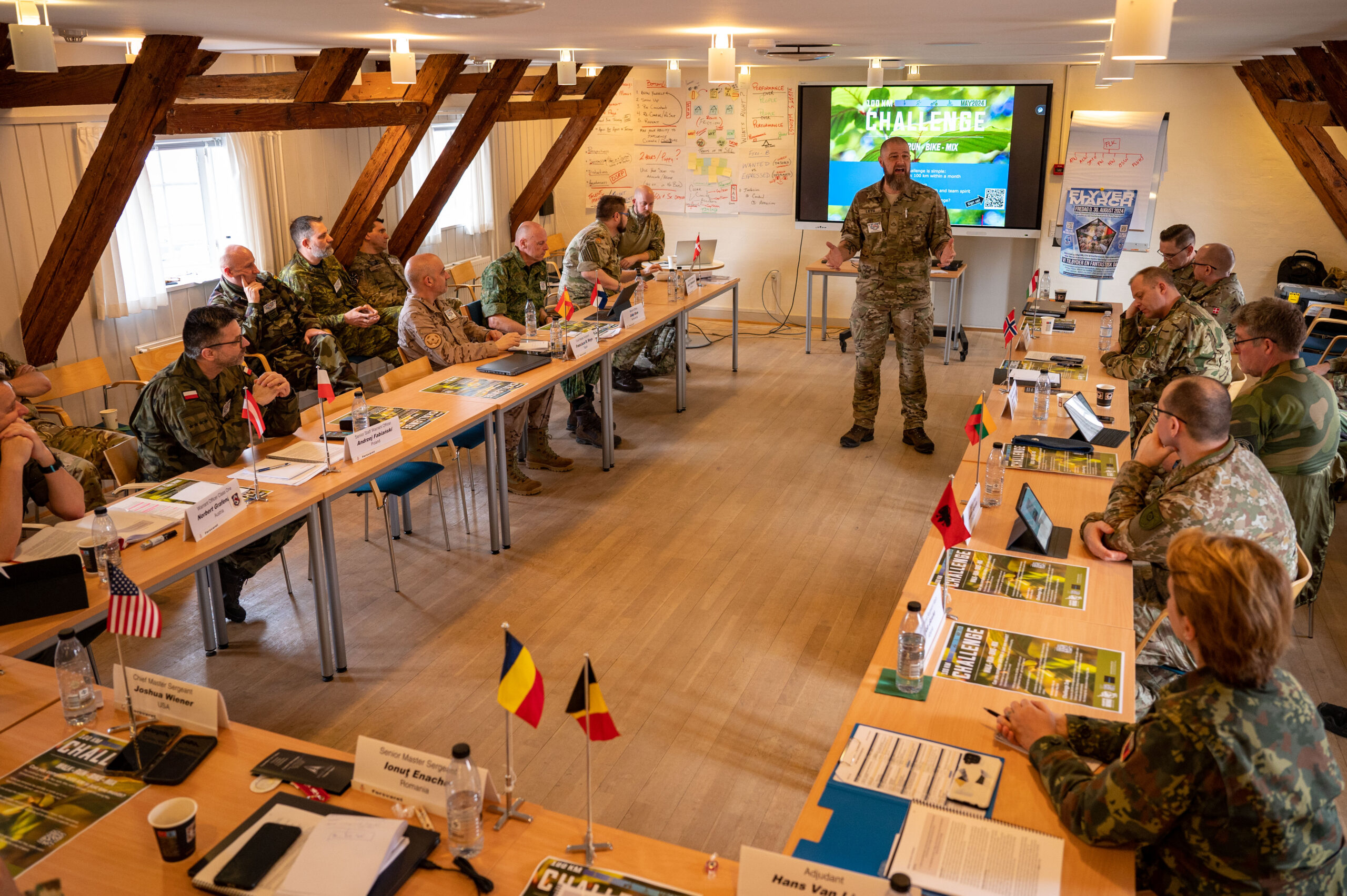
Credit: USAF/Tech Sgt Steven Adkins
While the most recent developments reflect the EU’s commitment to foster EDT R&D, it continues to lag behind global counterparts such as the United States and China in defence innovation expenditure.
Challenges and opportunities for the European defence sector
Amidst the ongoing transformation of the European defence sector, a vast array of challenges and opportunities is emerging, necessitating meticulous scrutiny.
The main challenges include the prevailing fragmentation and lack of scalability within the European defence industry, typified by fragmented supply and demand landscapes, engendering inefficiencies, diminished economies of scale, and hurdles in achieving interoperability. Additionally, talent acquisition and retention pose considerable difficulties, echoing broader challenges encountered by high-tech sectors, particularly in recruiting and retaining skilled personnel adept in digital technologies, engineering, and advanced manufacturing. The discord between the investment timelines of private investors, marked by shorter horizons, and the protracted procurement cycles of defence customers, poses a notable challenge for defence start-ups and non-traditional companies to scale their innovations. Furthermore, regulatory complexities and bureaucratic impediments, endemic to the defence sector, pose formidable obstacles to the expeditious development and integration of innovative technologies.
Conversely, a wealth of opportunities are emerging: the substantial increase in defence expenditures across European nations presents a pivotal opening for the defence industry to enhance its capabilities, channel investments into innovative technologies, and strengthen its competitive position. Collaborative defence initiatives, such as the EDF, PESCO, and EDIS, provide avenues for European defence enterprises to engage in collective endeavours, leverage shared resources, and benefit from increased economies of scale. Furthermore, the focus on dual-use technologies and the integration of civilian innovations into defence applications offer opportunities for the defence sector to leverage advancements from related domains, thereby enhancing its capacity for innovation. Additionally, as European defence entities refine their competitiveness and technological prowess, opportunities may arise for their expansion into new international markets, thereby further reinforcing the European defence industrial base.
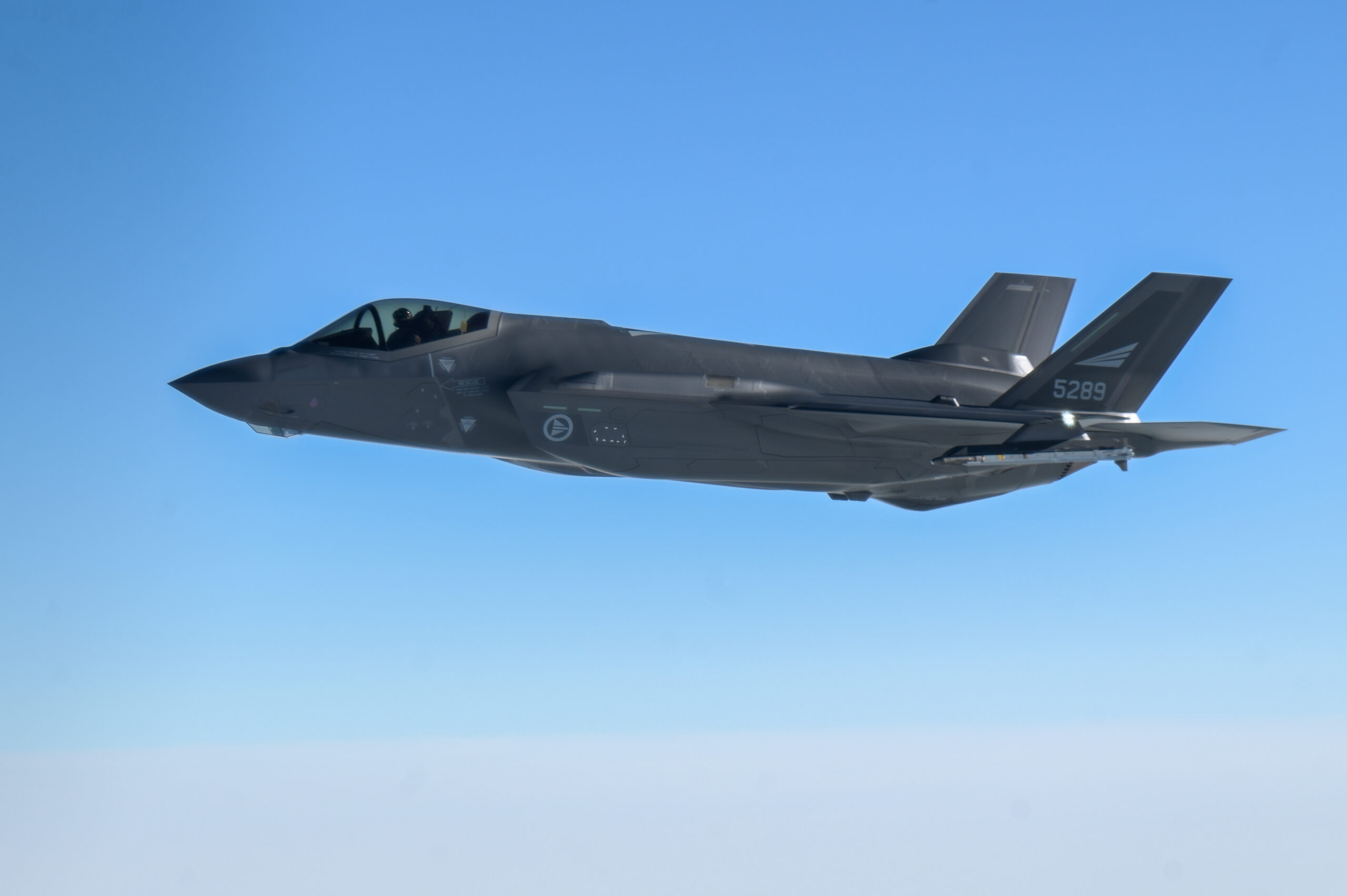
Credit: USAF/Airman 1st Class Zachary Wright
By adeptly addressing the related challenges and judiciously capitalising on the presented opportunities, the European defence sector can chart a course towards lasting success, thereby underpinning the continent’s strategic autonomy and the safeguarding of its citizens.
Conclusion
The European defence domain is undergoing significant changes driven by advances in disruptive technologies, heightened collaborative efforts, and evolving geopolitical dynamics. This necessitates proactive strategic planning and coherent policy formulation to effectively adapt to the rapidly shifting global landscape and uphold common security objectives. The emphasis on fostering cohesive European defence industrial frameworks and joint defence procurement initiatives reflects a collective effort aimed at strengthening strategic partnerships and optimising resources within the European defence structure. Moreover, the abundance of opportunities for advancing defence research, development, and collaboration within the EU and its Member States underscores the critical importance of synchronised efforts toward establishing a resilient and forward-looking European defence apparatus.
However, this transformative trajectory is not without challenges. Inherent fragmentation within the European defence industry, the imperative to attract and retain skilled personnel, and discrepancies between private and public investment timelines represent notable hurdles requiring attention. Yet, by capitalising on the opportunities presented by increased defence expenditure, collaborative initiatives, and the convergence of civilian and military innovation, the European defence sector can overcome these obstacles and emerge as a more robust, resilient, and innovative entity. This transformation is crucial for safeguarding the continent’s strategic autonomy, reinforcing its security infrastructure, and ensuring the well-being of its population. As the European defence landscape continues to evolve, concerted efforts from policymakers, industry stakeholders, and research establishments are imperative to foster a collaborative and innovative ecosystem capable of addressing the complex security challenges of the contemporary global context. Such collective endeavours are essential to navigate the intricate dynamics of the current geopolitical landscape and to effectively meet Europe’s security needs.
Andreea Stoian Karadeli




![2025 in the Western Balkans: A year-end SITREP Soldiers from the Czech company, part of the EUFOR Multinational Battalion, conducted a series of joint training exercises in Mostar alongside operators from Bosnia’s State Investigation and Protection Agency (SIPA). [EUFOR BiH]](https://euro-sd.com/wp-content/uploads/2025/11/Handshake_EUFOR-BiH-218x150.jpg)
![Stratus symbol Initially deployed during Operation Granby, the United Kingdom’s contribution to Operation Desert Storm in 1991, the RAF’s air-launched anti-radiation missile proved to be a radar killer. The missile remained in service, and in the RAF’s inventories, until 2013. [Thomas Withington]](https://euro-sd.com/wp-content/uploads/2025/11/ALARM-Thomas-Withington-Kopie-218x150.jpg)
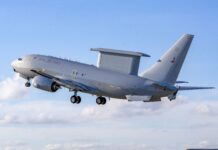
![Baltic Security: SITREP : US Soldiers assigned to 3rd Battalion, 8th Cavalry Regiment, 3rd Armored Brigade Combat Team, 1st Cavalry Division, Task Force Iron, fire a M1A2 Abrams tank during a live-fire demonstration for Iron Defender 25 at Orzysz Training Area, Poland, on 17 September 2025. [US ARNG/Sgt Eric Allen]](https://euro-sd.com/wp-content/uploads/2025/11/Abrams-firing_US-ARNGSgt-Eric-Allen-Kopie-218x150.jpg)

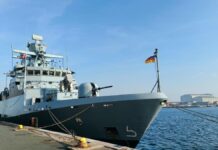
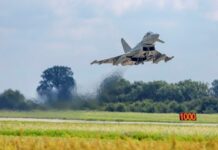
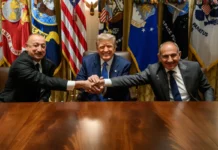
![Hybrid navies: Integrating uncrewed capability into carrier strike The US Navy (USN) carrier USS John C Stennis (left), the French Navy carrier FS Charles de Gaulle, and elements of their strike groups are pictured sailing together in US Fifth Fleet’s area of operations. The US, French, and UK navies are all developing ‘hybrid’ crewed/uncrewed mixes for their carrier airwing capability. [US Navy]](https://euro-sd.com/wp-content/uploads/2025/09/2-HST-CdG-USN-Kopie-218x150.jpg)